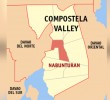Homecomings are joyous occasions. They mark the end of journeys, of settling in to comfort and familiarity, of leaving behind uncertainty and loss of security.
For many of us mobility has already become a fact of life. But these comings and goings are largely of our own choices, and if coming home after an absence of our own choosing fills us with excitement and anticipation, what more an absence that had been imposed?
In the wee hours of May 2, the phone of one of the Defend Talaingod convenors rang. It was one of the community leaders asking if they could leave right then. The earliest time of departure was a couple more hours away, the convenor explained; they could still rest in the meantime. But, everybody was already up and ready, came the reply. They couldn’t wait to get home.
When we finally started loading our stuff they were still in high spirits. They were carrying not only the few possessions they came here with, but the additional goods they had received: clothes, plastic containers (important in villages where there is no running water and water has to be fetched from springs or improvised hose systems), and the five kilos of rice the office of Davao City Mayor Duterte had distributed the day before. Even the pets they had brought with them, especially the dogs, seemed to sense the positive energy.
Nevertheless, when we got on the road, there was still anxiety among the community leaders and members of the support groups. As with the understanding reached in the dialogue with government officials and the military a few days before on 29 April, the Talaingod evacuees would stay at the center of Barangay Palma Gil until medical and other checks were finished before they could proceed to their inland villages.
We were apprehensive about this because of two reasons: first, the evacuees were all just absolutely raring to go home. Lowland Palma Gil wasn’t their home: though it was the same barangay, it was far cry from their mountains and streams and cool air. And besides, who would really want to stay for another night or two in yet another evacuation center? Second, we were well aware that many of the local leaders who had been very vocal about their plight had earned the ire of the military. You can go ahead and try to sell me the idea that the Philippine military has absolute respect for human rights, but what can’t be denied is that they are associated with an inordinately high number of extrajudicial killings, arrests without warrants and other forms of arbitrary detentions. We weren’t willing to take any chances.
As expected, the representatives of the local government were bent upon following the dialogue agreement to the letter, while we argued that it would be more prudent to follow its spirit instead. Let them go home; if there are relief goods to give them, then give them now. Better still, if they wish to follow through with the promise of giving medical services, then why don’t they themselves go to the Manobo villages and deliver them directly, as is their rightful duty.
In the end they reluctantly let us leave, but it was an uneasy victory. When they finally released some sacks of relief goods after quite a bit of negotiation, it was already very late in the day and the evacuees still had kilometers of walk to do. Indeed, it was well into the night when we finally reached Nasilaban, the last village that can be reached by motorized vehicles from where the Talaingod Manobos would commence their long treks to their inland settlements. This capped a long day of riding and waiting, riding and waiting, in the sweltering heat, crammed in dump trucks, permeated with the tense anticipation of being so near yet so far from our final destination. Everyone, even the hardiest Manobo, was exhausted, yet no-one was really home yet.
The next day saw most of us to have recouped some amount of strength, but there was a new challenge. The relief goods from the Talaingod LGU, in the form of “family packs” (each with three kilos of rice, plus a few canned sardines and a few packets of noodles), was less than the total number of evacuee families (including widowed individuals) that were there in Nasilaban. We were therefore faced with the potential problem of some families not receiving one such pack.
A few kilos of rice and some canned goods sound like such a measly amount, but it was a touchy issue among a people who have so little. A meeting of the Manobo leaders and members of the support groups at the Nasilaban Salugpungan High School was called to sort it out. The support group members immediately pulled out their calculators to try to come up with a rational way of dividing the goods: calculating how many kilos of rice were received, then dividing it to the total number of households. It sounded easy enough, until we realized that we didn’t have weighing scales or any other apparatus to see our calculations through.
Datu Doloman Dawsay, the Salugpungan Ta Tanu Igkanugon spokesperson and elderly Manobo leader whose small frame and soft voice belies the brave pangayaw warrior within, came up with a suggestion none of us were able to think of. Why don’t we instead, he says, pour out all the rice onto a huge tarpaulin sheet, then each datu can carve away from the main mound a pile proportionate to the size of his village, then each village can decide themselves how to divide the rice by household.
Why didn’t we think of that ourselves? Two problems solved right away: how to apportion the rice without scales, and how to ensure that the parts would be equitable at the level of each village and each household. In the presence of all, any datu could easily check the proper piles for each village, and talk among them if there was still a need to adjust.
The other datus took up the suggestion and proceed to refine it. One datu suggested that instead of pouring the rice on the tarp, they could just directly take the packs from each sack (there were ten packs in one sack) and divide the total packs proportionately for each of the eleven villages present. Certainly a fine reasoning, for which many datus nodded, paving the way for the next suggestion from another leader: since there are about fifteen sacks, we really didn’t need to remove the packs. One sack can go straight to each of the eleven datus, and then calibrate the remaining packs proportionate to the household sizes for each village. Everyone endorsed the last suggestion.
It was a vibrant scene after the meeting. One datu spontaneously emerged as facilitator to deal with proportioning the extra packs: more for villages with a greater number of households, and less for the smaller ones. The same approach was followed as each datu returned to his village group. All across the Nasilaban High School grounds the Talaingod Manobos gathered in separate circles, with the plastic bags of rice in the middle, as household heads discussed among them, canned goods moved back and forth, and rice was distributed by the handful.
As an anthropologist what I witnessed was exciting. You often read of such scenarios in textbooks discussing sharing and reciprocity dynamics among groups with little social differentiation (a quick, though not completely accurate, term would be egalitarian); studies often argue that such mechanisms, though not perfect, comes close to as equitable a distribution as possible. This is because the checks and balances made possible by everyone’s presence prevents one person or household from accumulating too much, plus a datu’s competence would come under question if many of his village-mates come away dissatisfied. Also, it was the datus themselves who collaboratively came upon the solution that adhered to their idea of fairness and practicality, and they pretty much showed up the “rational” calculator-dependent support group volunteers, including me.
By the next day, almost all the villagers were rested and ready for the last leg of their journey. The support group documentation team decided to leave early to keep up as best we could with the villagers of Bagang, the most inland of the sitios that had joined the bakwit. The objective was to document the effects of the evacuation and the militarization that followed, preferably as the villagers got to their homes, before they could clean any mess or repair any damage.
(To be concluded)










